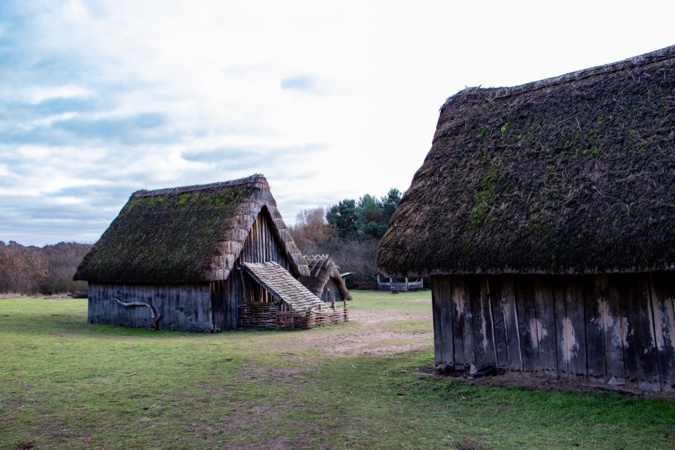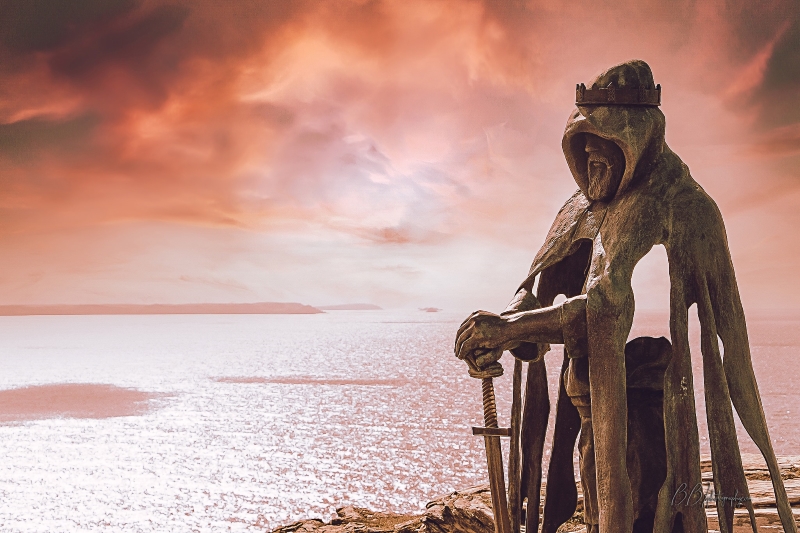Letocetum is the ancient remains of a Roman settlement. It was an important military staging post and posting station near the junction of Watling Street, the Roman military road to North Wales, and Icknield (or Ryknild) Street (now the A38). The site is now within...
Dunnottar Castle is a ruined medieval fortress located upon a rocky headland on the northeastern coast of Scotland, about 2 miles south of Stonehaven. The surviving buildings are large of the 15th and 16th centuries, but the site is believed to have been fortified in...
Royston Cave is an artificial cave located in Katherine’s Yard, Melbourn Street, Royston, England. It is located beneath the crossroads formed by Ermine Street and the Icknield Way. It has been speculated that it was used by the Knights Templar, who founded nearby Baldock, but...
The Staffordshire Hoard is the largest hoard of Anglo-Saxon gold and silver metalwork yet found. It consists of over 3,500 items. The hoard was most likely deposited in the 7th century and contains artifacts probably manufactured during the 6th and 7th centuries. It...
Prehistoric settlement: The site at West Stow has shown evidence of human habitation throughout British prehistory. Indeed, the wider Lark Valley contains the greatest known concentration of prehistoric settlements in the region of East Anglia. Mesolithic: Excavation at West Stow has discovered evidence for hunter-gatherers...
Lancaster Castle is a medieval castle in Lancaster in the English county of Lancashire. Its early history is unclear but may have been founded in the 11th century on the site of a Roman fort overlooking a crossing of the River Lune. In 1164, the...
Newcastle Castle is a medieval fortification in Newcastle upon Tyne, England, built on the site of the fortress that gave the City of Newcastle its name. The most prominent remaining structures on the site are the Castle Keep, the castle’s main fortified stone tower, and...
Stirling Castle, located in Stirling, is one of the largest and most important castles in Scotland, both historically and architecturally. The castle sits atop Castle Hill, an intrusive crag, which forms part of the Stirling Sill geological formation. It is surrounded on three sides by...
Alnwick Castle is a castle and country house in Alnwick in the English county of Northumberland. It is the seat of The 12th Duke of Northumberland, built following the Norman conquest and renovated and remodeled a number of times. Alnwick Castle guards a road...
Cheddar Gorge & Caves: People have used the caves in Cheddar Gorge for shelter for 40,000 years. We derive this from evidence found in and around the caves. Cheddar Man is famous as Britain’s oldest complete skeleton. Found buried in Gough’s Cave in 1903,...
Merrivale Standing Stones and avenue – Remains of a Bronze Age settlement and a complex of ritual sites, including three stone rows, a stone circle, standing stones, and a number of cairns – earth mounds associated with burials. The monuments were probably built over a...
Tintagel Castle is a medieval fortification located on the peninsula of Tintagel Island adjacent to the village of Tintagel, North Cornwall. The site was possibly occupied in the Romano-British period, as an array of artefacts dating from this period have been found on the peninsula,...














